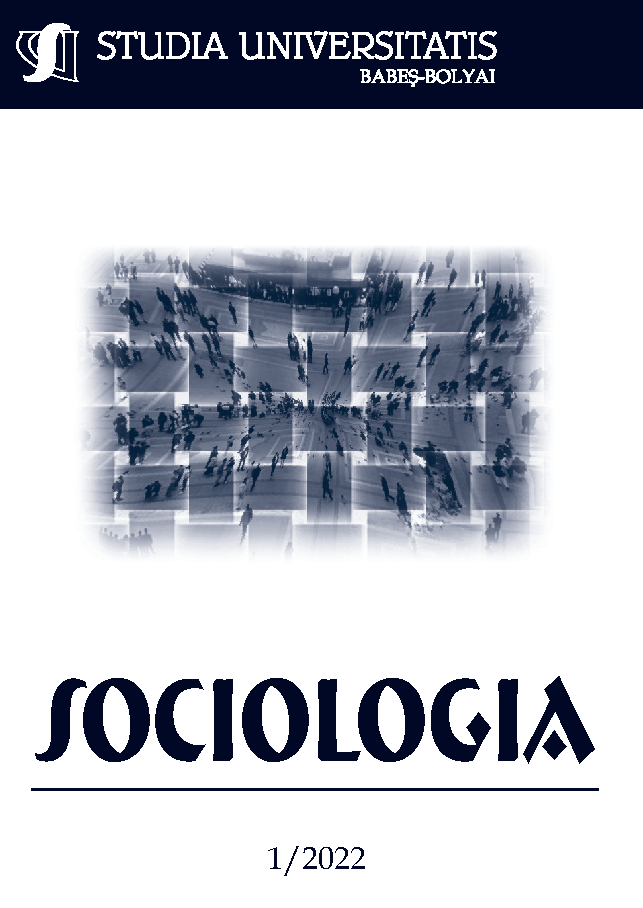OCCUPATIONAL STRESS AND ITS PERCEIVED NEGATIVE IMPACT ON THE HEALTH AND PERFORMANCE OF THE EMPLOYEES OF A BANKING CALL CENTER
DOI:
https://doi.org/10.2478/subbs-2022-0005Keywords:
Occupational stress, Banking Call Center, Health, Motivation, Professional mobilityAbstract
Professional stress is a challenge for many companies that want to keep their employees within the organization on one hand and to ensure their performance through a comfortable working environment on the other. This study investigated and evaluated the perceptions of 14 male employees (French and Romanian speakers) working in the same banking call center in Timisoara regarding the causes and effects of work-related stress. The applicability of this study is to develop possible strategies and practices for controlling and reducing work-related stress in order to decrease the high staff turnover. The elaboration of this research is based on the concepts of occupational stress, its effects on the perceived emotional and physical health of the employees but also on their performance and motivation at work. To carry out this qualitative research, we used a semi-structured interview guide written in both Romanian and French, since half of the interviewees are Romanians, and the other half are North Africans from Tunisia, Morocco, and Algeria. The main topics on which the interview guide questions were developed are the following: personal and professional experience, working schedule, work rate, performance, motivation, mental and physical health and how all the aforementioned contribute to professional mobility. The research results show that the employees performance and motivation at work are indeed affected by the perceived occupational stress, but it is not the main reason why they consider changing the current job. For most of the interviewed employees, the individual life goals, ambitions, and future projections are the ones influencing them to look for another job position after gaining the desired experience within the call centers.References
Angouri, J. (2014). Multilingualism in the workplace: Language practices in multilingual contexts. Multilingua, 33(1–2), 1-9.
Bakker, A. B., Demerouti, E., and Sanz-Vergel, A. I. (2014). Burnout and work engagement: The JD–R approach. Annual Review of Organizational Psychology and Organizational Behavior, 1, 389-411. (doi:10.1146/annurev-orgpsych-031413-091235, 20/03/2021).
Beehr, T. A., Newman, J. E. (1978). Job stress, employee health, and organizational effectiveness: A facet analysis, model and literature review, Personnel Psychology, 31: 665-699.
Bencsik, A., Horváth-Csikós, G., and Juhász, T. (2016). Y and Z Generations at Workplaces. Journal of Competitiveness, 8(3).
Beyer J and Marshall J (1981). The interpersonal dimension of collegiality, Nursing Outlook 29(11), 662-665.
Cameron, K., Bright, D., and Caza, A. (2004). Exploring the Relationships between Organizational Virtuousness and Performance. American Behavioral Scientist 47(6), 1-24.
Duff, P. A. (2007). Second language socialization as sociocultural theory: Insights and issues. Language Teaching, 40(4), 309-319.
Ewald, O. (1997), Das Burnout-Syndrom. ErgoMed, 21: 93-96.
Folkman, S. (2009). Commentary on the Special Section “Theory-Based Approaches to Stress and Coping”: Questions, Answers, Issues and Next Steps in Stress and Coping Research, European Psychologist 14, 72–77.
Godfrey, C.M. Harrison, M.B. Lysaght, R. Lamb, M. Graham, I.D. and P. Oakley (2011). Care of Self – Care by Other – Care of Other: The Meaning of Self-Care from Research, Practice, Policy, and Industry Perspective, International Journal of Evidence-Based Healthcare 9, 3–24.
Ivancevich, J. M., and Matteson, M. T. (1980). Stress and work. Glenview, II1.: Scott, Foresman.
Jalowiec A and Powers M (1981). Stress and coping in hypertensive and emergency patients, Nursing Research 30,10.
Jamal, M. (2005). Burnout among Canadian and Chinese employees: A cross-cultural study, European Management Review, 2: 224–230.
Katz, D. and Kahn, R. L. (1978). The social psychology of organizations, New York: Wiley.
Krishnan, S. K., Bopaiah, S., Bajaj, D., and Prasad R. (2013). Organization, Generation, and Communication – Infosys Experience. NHRD Journal. 10, 85-93.
Lazarus R., Avenll J and Opton E (1974). The psychology of coping. Issues of research and assessment, Coping and Adaptation (Coelho G, Hamburg D and Adams J eds), Basic Books, New York.
Maas, J. (2001). Power Sleep, Quill Books, New York.
Mancmi J, Lavecchia C and Qegg R. (1983). Graduate nursing students and stress, Journal of Nursmg Education 22(8), 329-334.
Maslach C, Jackson SE. (1981). The measurement of experienced burnout, Journal of Occupational Behaviour, 2: 99-113.
National Research Council and the Institute of Medicine (2001). Musculoskeletal disorders and the workplace: Low back and upper extremities. Panel on Musculoskeletal Disorders and the Workplace, Commission on Behavioral and Social Sciences and Education, National Academy Press, Washington, DC.
Schaufeli W, Enzmann D. (1999). The Burnout Companion to Study and Practice: A Critical Analysis, London: Taylor and Francis Ltd.
Schuler, R. S. (1980), Definition and conceptualization of stress in organizations, Organizational Behavior and Human Performance, 25: 184-215.
Seaward, Brian, Luke (2018), Managing Stress. Principles and strategies for Health and Well-Being, Paramount Wellness Institute, Boulder, Colorado.
Seco, V. M. M., and Lopes, M. P. (2013). Professionals calling in lifelong learning centers. Journal of Industrial Engineering and Management, 6: 668-685.
Smith, A., Johal, S., and Wadsworth, E. (2000). The Scale of Occupational Stress: The Bristol Stress and Health at Work Study: HSE Books Sudbury.
Stranks, J. W. (2005). Stress at work: Management and prevention, Oxford Burlington, MA: Elsevier/Butterworth- Heinemann, 69-70.
Strömmer, M. (2016). Affordances and constraints: Second language learning in cleaning work. Multilingua, 35(6), 697-721.
Downloads
Published
How to Cite
Issue
Section
License
Copyright (c) 2022 Studia Universitatis Babeș-Bolyai Sociologia

This work is licensed under a Creative Commons Attribution-NonCommercial-NoDerivatives 4.0 International License.



